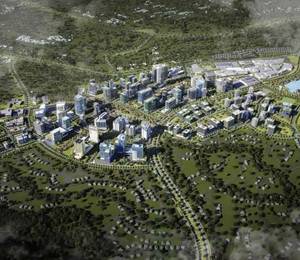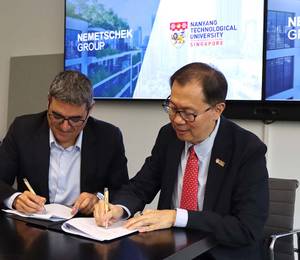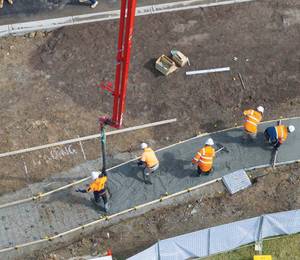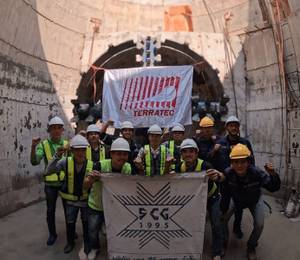Bringing over 20 years’ experience in the built environment sector, Dung Pham is highly accomplished in structural and steel engineering and seismic analysis for high-rise buildings and large-scale infrastructure projects.
Based in Ho Chi minh City, Vietnam, she has been involved in a variety of projects across the country including Vung Tau Petroleum Hotel, D’. Palais de Louis, Da Nang Airport and Cam Ranh Airport, as well as one of Asia’s largest mass engineered-timber buildings - the Nanyang Technological University Academic Building South in Singapore.
Reflecting on her career choice, Dung Pham says, “Back when I was in school, I thoroughly enjoyed physics and mathematics, and these were my stronger subjects. After I graduated from university, I knew I wanted to work in a field where I could apply the knowledge from both subjects, so I decided to pursue a career in engineering.”
She is now working for Aurecon as a senior structural engineer. In her role, Dung Pham collaborates with architects and clients on existing projects including the drawing and design stages and assisting in the submission of technical designs to the Construction Ministry, reviewing drawings and calculations, providing guidance to junior engineers and working on bids. She also conducts site inspections to ensure that buildings are constructed in accordance with the design intent.
Emerging trends in the industry
“It is such an exciting time to join the engineering and construction industry today, as we are seeing digital tools enable more complex designs to become a reality,” Dung Pham says, speaking of the latest developments in the industry. “We are progressively seeing taller, more slender buildings that can be efficiently and safely designed with a smaller footprint.
“To support slimmer and taller designs, the materials used to construct buildings has evolved too. In Vietnam, the use of high-grade concrete allows for stronger foundations and slimmer pillars, making it possible to build super tall and complex design buildings while retaining a large portion of usable space.
“Digital tools are also enabling the design of ‘smarter’ buildings that not only create efficiencies and connectivity for occupants, but also incorporate sustainable materials, such as timber, and sustainability principles, to decrease carbon emissions and improve health and wellbeing.”
Dung Pham adds that design teams are now able to collaborate more effectively using BIM 360 software, which allows multiple stakeholders such as architects and mechanical and electrical engineers to visualise, identify, and rectify issues during the design stages prior to construction.
“We can also use artificial intelligence, in the form of machine learning, to provide insights to enable better decision-making, and we can create digital models of buildings and entire portfolios to assist with improved management and operations post-construction.”
‘It expands my horizons’
For Dung Pham, the best thing about working in engineering and construction is the chance to see the tangible results of her work. “Although building architecture is often complex in design, I enjoy the challenge of bringing architectural vision to life through robust structural design. The process provides me with a sense of fulfilment as I get to problem-solve and breathe life into both old and new structures.
“When my team and I encounter challenges while working with stakeholders, we approach the issue from the stakeholders’ perspective to help us better understand their concerns.”
Dung Pham says more women should consider taking up careers in engineering and construction, “particularly if you enjoy making sense of things, problem solving and pushing the boundaries. The industry offers a diverse career and involves many principles such as design, people management, on-site exposure and working with stakeholders from a broad range of backgrounds.
“Each project is a new experience for me and an opportunity to learn and expand my horizons. As engineers, we also leave a legacy for future generations through designs that add value to the communities in which we live and work. That is the essence of engineering and why I feel it is such a fulfilling career.”
Photos courtesy of Dung Pham and Aurecon












